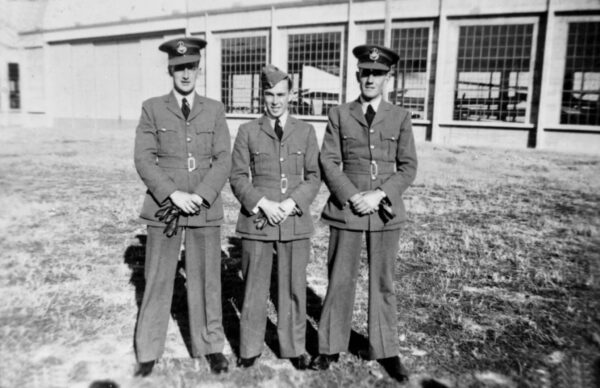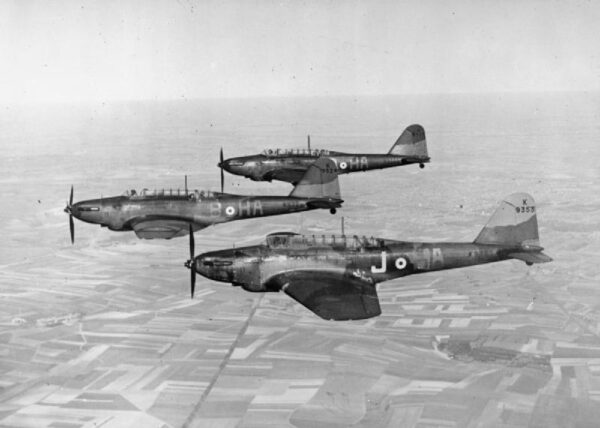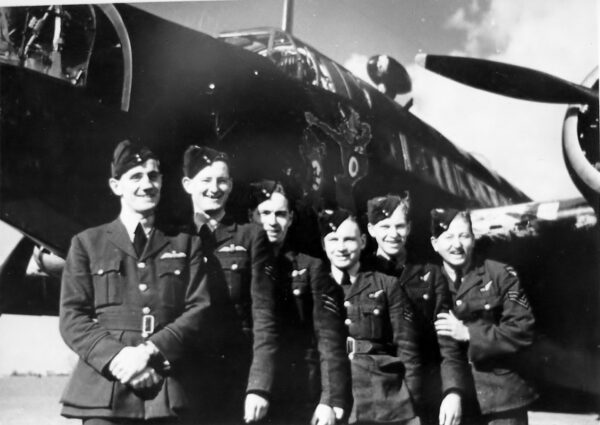Stories
Stories
Early operations over France
Timaru-born Ian Anstey was one of the first New Zealand airmen to be in aerial combat. His squadron was tasked with attacks on the advancing Germans after the ‘Phoney War’ came to an abrupt end in May 1940. Outnumbered and outclassed it was a fight for survival in the skies over France.

Three members of No. 6 Pilots course at RNZAF Station Wigram. L-R: FW ‘Ted’ Hall-Jones, AE ‘Bert’ Wickham, W Ian Anstey.
(Credit: Air Force Museum of New Zealand)
Ian Anstey joined the RNZAF in 1938. He was one of the small group of New Zealanders who had joined the RAF on a short-service commission in the RAF in 1939 ahead of the outbreak of WWII.
After the declaration of war in September 1939, No. 1 Group, with its squadrons of Fairey Battles, left for France to form the Advanced Air Striking Force. They were there to give the British Expeditionary Force some air-striking support and to allow the Battles to operate against German targets, since they lacked the range to do so from British airfields.
Anstey recalled his experiences in a post-war letter to Wing Commander H.L Thompson in 1948 now held by the Air Force Museum of New Zealand. “In company with about 20 complete flying crews which included V.A. Cunningham, J.C.F. Hayter, A.E. Wickham and self we left England on 27/11/1939 to join various RAF Battle Squadrons attached to the Advanced Air Striking Force stationed in France”. Anstey was assigned to No.218 Squadron.
Then, on 10 May 1940, the war began in earnest with the German army sweeping onto Belgium. Some of the Advanced Air Striking Force was caught on the ground by German air attacks on their airfields at the opening of the invasion. The surviving Battles were pressed into operations, but they were severely outnumbered and outclassed as they made near suicidal attacks on the advancing Germans after several months of the “phoney war”.
The following day (11 May), H.H Murray another New Zealander who had just joined 218 Squadron a few days previously, went out on his first operational trip. The target was a German mechanised unit east of the Siegfried line and north of Aachen. Murray and the rest of the formation failed to return. They were shot down when approaching the Siegfried Line, the Battles proving to be the Battles proved to be horrendously vulnerable to enemy fire.

Three Fairey Battle fighter bombers of No 218 Squadron over France.
(Credit IWM)
On 12 May , Anstey took off at 16.30 hrs on his first operations trip. The target was a motor convoy passing through Bouillon north-east of Sedan. He flew in the No. 2 position in a formation of three aircraft. The first indication that they were over enemy territory was the sound of exploding shells followed almost immediately by seeing the roundel on the leader’s wing disappear leaving a gaping hole. A few seconds later smoke and flames began pouring from the leader’s engine and he passed under me in what appeared to be a shallow controlled dive, his gunner wireless operator giving the “thumbs up” sign.
A few minutes later the convoy was sighted. No. 3 aircraft dropped his bombs and was last seen still continuing on his course behind the enemy lines. Anstey dropped his bombs from just one hundred feet, but “we were unable to observe results as the machine gun and pom pom-fire was becoming too intense and accurate. On our way back we passed over the burning wreckage of our leader’s aircraft”.
Now alone, Anstey’s aircraft was receiving the undivided attention of the enemy. “We were flying at ground level and as we flew down the valley, we could see tracer bullets coming down from either side. I will remember to my dying day seeing two black and white cows peacefully grazing in the valley, as we zigzagged our way out of what seemed to us to be a valley of hell. Right then, I would have given anything to have been able to change places with the two old cows”.
After getting out of the valley Anstey crossed the front line and returned to base without further incident. “Our ground crew met us with traditional open arms and after ascertaining that we were alright, that we had dropped our bombs and fired our guns and that the aircraft had flown alright, transferred their attention to the aircraft and proudly informed us that we had 72 bullet holes for our 15-minute joy ride over enemy territory.”
Anstey survived two more missions in France with 218 Squadron before it was withdrawn in June 1940, having suffered many losses while bombing advancing German troops. Back in England the squadron converted to the Bristol Blenheim and then in November, it rearmed with Vickers Wellingtons and began bombing a wide variety of Axis targets with the new longer-range aeroplanes.

The crew of New Zealander Pilot Officer William Ian Anstey RNZAF RAF Marham.
From L to R Anstey, Sgt Shaw 2nd pilot, Sgt Norton, Nav, Sgt Heyward, Wop, Sgt Black Front gunner and Sgt Rose rear gunner.
Later Anstey served in North Africa with No. 70 Squadron, again flying Wellington bombers in support of the 8th Army’s westward advance, first into Libya then Tunisia. In 1941, he was awarded the Distinguished Flying Cross. His citation reads: This officer as captain of aircraft carried out seven long distance bomber attacks during the first fourteen days in August 1941. four attacks were made on shipping it at Benghazi, two attacks on the Corinth canal, and one on the aerodrome at Berka, Libya. Good results were obtained on each occasion. Throughout Flying Officer Anstey displayed great efficiency and physical endurance. He has completed forty-three operational missions, involving nearly three hundred hours flying.
In all, Anstey flew seventy missions in Battle, Blenheim and Wellington aircraft.
Anstey’s letter and an oral history are held by the Air Force Museum of New Zealand.